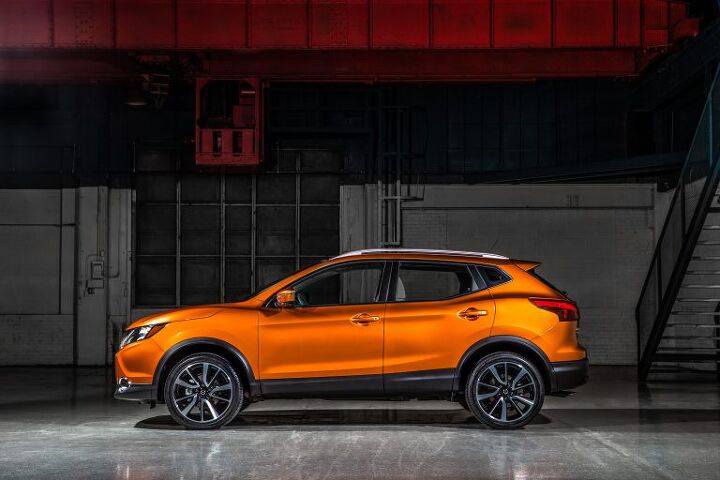NAIAS 2017: Say Hello to Your Next Rental Car, the 2017 Nissan Rogue Sport

You know it. Nissan knows it.
Consumers are fleeing cars in favor of high-riding crossovers. And the Rogue Sport is another one.
Despite the name, Nissan’s newest utility is less Rogue Jr. and more overseas transplant. Nissan America adapted the Qashqai, available in global markets since 2006, with a new name to meet North American tastes (though not in Canada, where it’ll still use its Turkic nomenclature). The renaming ensures we can pronounce it (and Nissan can preserve its Star Wars connection). More importantly, it hitches the new crossover to Nissan’s best selling nameplate.
Rogue sales surged 15 percent to 330,000 units in the U.S. last year, representing nearly one out of four Nissans sold. With the Rogue Sport, Nissan slots a crossover between the successful Rogue and the aging Juke, and connects the new crossover to one of the most successful nameplates in Nissan history.
The 172-inch-long Rogue Sport is within a couple inches in overall length of the new Jeep Compass and Toyota C-HR, and neatly splits the difference between the 185-inch-long Rogue and the 162-inch-long Juke. It also shares more than just a striking visual resemblance to its larger stalemate thanks to a shared platform.
The two-row, five-passenger crossover gets a 141-horsepower 2.0-liter four (as opposed to the 2.5-liter four-cylinder equipped Rogue) mated to a Xtronic CVT transmission. As one might expect, this is a front-wheel-drive vehicle with optional all-wheel drive.
Nissan is going where the consumers are. In this case, that means slicing its crossover offerings thinner than fleet profit margins.
Assembled in Japan, the Rogue Sport will be available in familiar S, SV, and SL trim levels. Pricing has not yet been announced, but the Rogue Sport should arrive at dealers and rental lots this spring.

Twenty year auto industry professional. Currently CEO at Turbo International, the premier American manufacturer of OEM replacement turbochargers for the global aftermarket.
More by Seth Parks
Latest Car Reviews
Read moreLatest Product Reviews
Read moreRecent Comments
- Canam23 I had a 2014 GS350 that I bought with 30K miles and the certified unlimited four year warranty. After four and a half years I had 150K miles on it and sold it to Carmax when I moved to France a little over two years ago. As you can see I ran up a lot of work miles in that time and the Lexus was always quick, comfortable and solid, no issues at all. It was driving pretty much the same as new when I let it go and, and, this is why it's a Lexus, the interior still looked new. I bought it for 30K and sold it for 16K making it the most economical car I've ever owned. I really miss it, if you have to drive a lot, as I did in my job, it is the perfect car. Some may argue the Camry or Accord would foot that bill, but I say nay nay, you really want the comfort and rear wheel drive of the Lexus. Keep it forever Corey, you won't regret it.
- SCE to AUX "...if there’s enough demand"If they are only offered as electric to begin with, how will Stellantis gauge demand - unhappy customers demonstrating at the dealers with torches and pitchforks?What a great way to add cost and reduce competitiveness, by making a propulsion-agnostic platform with a hundred built-in compromises.
- FreedMike Awfully nice car.
- Cprescott So is this going to lie and tell you that they have quality products at affordable costs that won't get recalled?
- SCE to AUX So they might continue gigacasting 3 pieces instead of 1. Tesla does gigacasting as a business advantage, so they aren't abandoning it. They probably ran into some tech challenge related to integrating 3 pieces into 1, so 3 will do.Meanwhile Toyota and several Chinese mfrs are adopting gigacasting because of Tesla.





































Comments
Join the conversation
I think it looks better than its big brother, at least in that burnt orange paint.
They call it "Sport", yet it gets less powerful powerplant. LMAO.